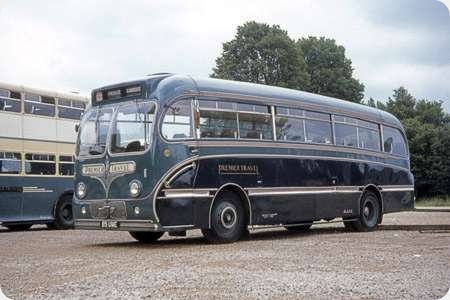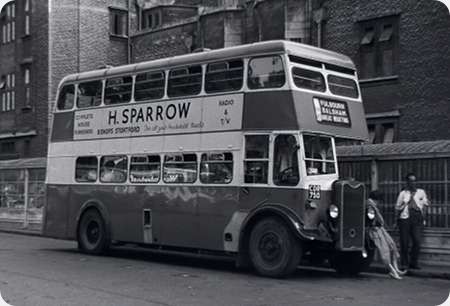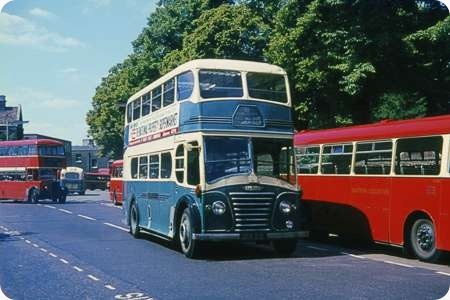Premier Travel – AEC Reliance – 85 UME – 72
Premier Travel (Cambridge)
1959
AEC Reliance 2MU3RV
Burlingham Seagull C41F
The final Mk. VII incarnation of the classic Burlingham Seagull coach body is generally considered by most to be something of a travesty, compared to the earlier versions. With its squared off side panel and slight nod towards tail fins – becoming popular at the time on cars – and longer and fewer side windows attempting to vie with Plaxton’s first Panoramas, it just didn’t work and soon afterwards a complete redesign resulted in the introduction of the Seagull 70 which seemed to some degree to be inspired by the ‘new classic’ – the Harrington Cavalier.
85 UME had been new to Valliant of London W5 in 1959 but had later passed with others to Premier Travel, along with similar examples from Yelloway, joining a further one which Premier had bought new and resulting in probably the largest number of Mk. VII’s in any one fleet.
It is seen here on an enthusiasts’ tour in 1971.
Photograph and Copy contributed by John Stringer
30/06/16 – 06:38
John, I agree absolutely with your comments about this final version of the classic Seagull design but strangely the angle of the photograph in your posting makes this one look really rather nice. I’m intrigued though, about those dividing strips in the side windows, it seems very odd to have panoramic windows and then divide them into smaller panes.
Chris Barker
30/06/16 – 08:05
The Seagull never seemed to look right without the centre sliding door. It was fundamental to the original design and the later front entrance versions always seemed to me to be something of a ‘lash-up’.
Philip Halstead
01/07/16 – 06:14
I’ve never seen a picture of this one when it was new, but I suspect that the window dividers were a later addition. Quite a few of the Seagull Mk VII bodies needed remedial work as Burlingham’s designers had been rather optimistic about the load-bearing strength of the original window pillars! As far as I know this was never a problem with the Plaxton Panorama of the late 1950s (or any of its successors), but the problem did re-occur at the Blackpool factory – by then Duple (Northern) – in the 1960s with the original Viceroy. Several of those rolled on to their backs resulting in window pillar collapse and crushed passengers.
Neville Mercer
01/07/16 – 06:15
The stenghtheners between the window pillars seem to run inside the glazing, and my guess is they were put in at recertification as the Mk VII had a reputation for flexibility…
Stephen Allcroft
01/07/16 – 06:16
Strangely, despite editing the photo for submission, I’d failed to notice those dividing strips. I’m going to have to search for a photo showing it (or similar ones) with Valliant to see if they were built like that, or whether it was a Premier Travel modification.
I agree, Philip, that the original centre-entrance version was by far the the best looking, but I think the front-entrance Mk.IV’s and V’s still looked pretty decent too. I think the worst looking Seagulls were the Mk.VI with flat windscreens and little bus-type windows (though they were undoubtedly a more practical proposition from Ribble’s point of view), and the downright ugly 1959 season model for the Bedford SB.
John Stringer
01/07/16 – 16:18
Setting aside the possible involvement of the Safety Elf or his predecessors, could it be that the centre-door version was more "coach" as used by one’s local holiday tours firm, and the front/forward entrance one was more "express bus" as used by North Western, Ribble, etc?
Pete Davies
04/07/16 – 15:58
Here is a picture of 86 UME without the strengthening in the middle of the windows (at least on the offside): www.sct61.org.uk/
Stephen Allcroft
Quick links to the - Comments Page - Contact Page - Home Page



